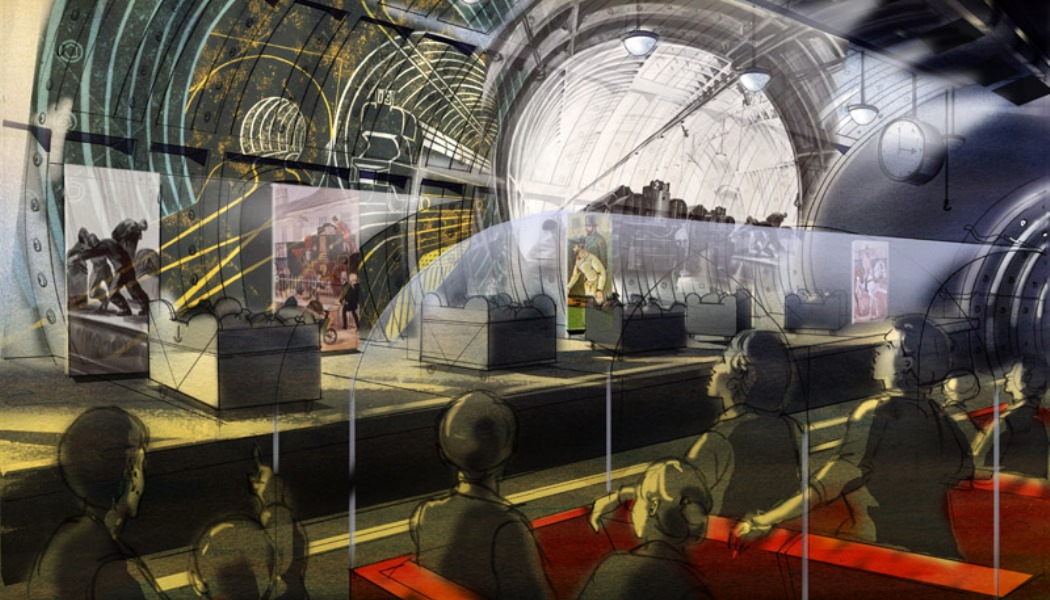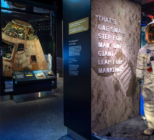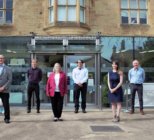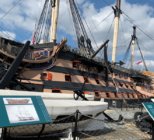When was Haley Sharpe Design established and how does the hsd of today compare to that of earlier years?
hsd was formed over 30 years ago. We still maintain our core values from those early days, although the world has changed a lot since then, particularly in terms of communications and the technology we use to design. We still have drawing boards at hsd which are used with affection rather than through necessity! The advent of CAD, mobile phones and email has really impacted the way we communicate and the speed at which we can respond to clients, as well as participating in sector dialogue.
Clearly the desire for didactic, top-down interpretation has lessened and most clients are now dedicated to dialogue and interaction with their visitors. We have also broadened our horizons and work internationally more than we used to, exploring new countries and cultures, sharing diverse stories.
We’re also continuously broadening our skill-base and strengthening our team as trends and demands within the sector are ever changing. At hsd we’ve always had a real passion for design and we still love marrying creativity with intellectual concepts.
What was the company’s philosophy when it was established and has that changed over the years?
hsd was founded as we wanted to create more engaging and dynamic museum and heritage-based visitor experiences, to better communicate the cultural, scientific and historic foundations that have shaped the world we live in.
Our process then and now is to listen, think, discuss and then design, and then do it again and again. Collaboration, team work, clarity and understanding are a few of the words that resonate throughout our working methodology and company history. Shared knowledge, mentoring and pride are other “drivers” that aptly describe our studio’s approach to design. Clear communication has always dominated over technological gimmickry. However, that isn’t to say that we don’t love exploring the effective use of media which can be applied to engage with visitors across the entire spectrum of learning styles.


What skills and expertise does the company pride itself on and what makes it distinct from the competition?
By definition we see ourselves as an extension of the client team, turning words and concepts into designs and then into experiences. Being facilitators for organisations we are honoured to work with, helping them to achieve their aspirations is really important to us. Our role is as amplifiers and translators turning our clients’ vision into visual and spatial communication that can be readily experienced by their visitors.
What have been the major changes to exhibition design in the past decade?
There’s a perception of technology being the ultimate answer to difficult and complex themes, aided by the migration of thematic or immersive environments from the attractions and theme park industries. This means clients often want to deliver a “wow” factor or entertainment as a replacement for engagement or within limited budget parameters. The advent of CGI and really advanced video gaming and home entertainment systems has also created a benchmark for what is possible in museum environments.
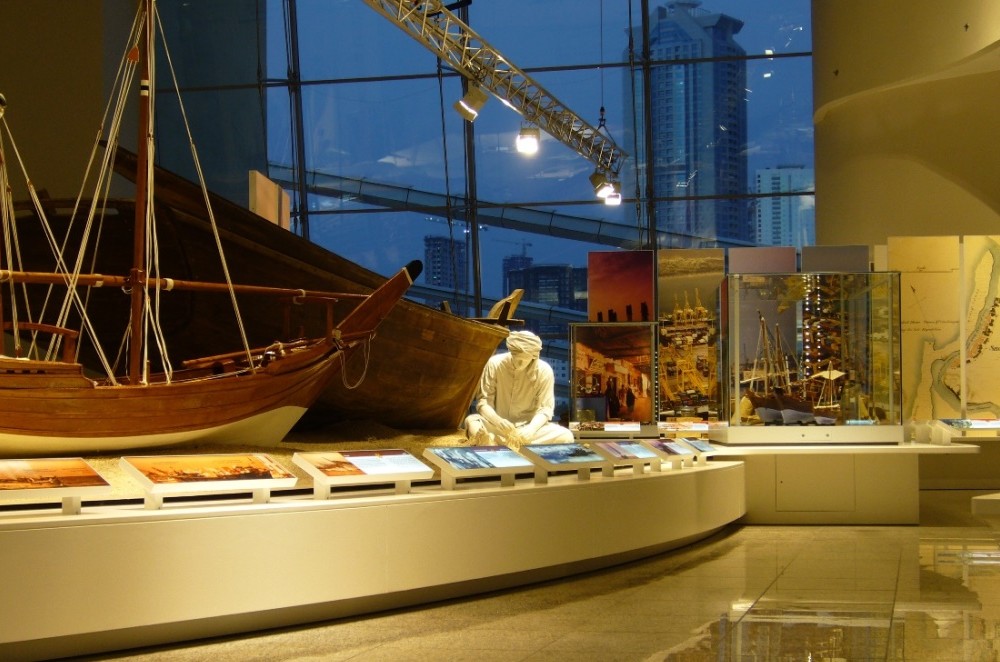
What have been some of the breakthrough projects that hsd has worked on?
- The Stonehenge Visitor Centre, Wiltshire, UK
- Powerhouse at The Tower of London, UK
- Magna Carta: Spirit of Justice, Power of Words at Salisbury Cathedral, UK
- Historic Jamestowne, Virginia, USA
- Fort McHenry Historic Shrine, Baltimore, USA
- ConocoPhillips Corporate History Museums, USA
- American Enterprise Exhibition, National Museum of American History, Smithsonian Institution, Washington DC, USA
- Canadian War Museum, Ottawa, Canada,
- Royal Ontario Museum, Toronto, Canada
- Sharjah Maritime Museum, UAE
- Sharjah Museum of Islamic Civilization, UAE
- Arabian Wildlife Centre, Sharjah, UAE
- Hong Kong Maritime Museum, Hong Kong
This year hsd is sponsoring the 50th anniversary of Museum Studies at the University of Leicester by opening its doors to delegates – how important is it for the company to nurture new talent?
The 50th Anniversary of the Museum Studies course is an important milestone for the museum sector worldwide. At hsd we are very pleased to support this event and are proud of our home city’s world-renowned School of Museum Studies. Many of our clients and employees have worked through Doctorates and MA courses at Leicester, benefitting from the expertise within the department.
We see the nurturing process as being a two-way dialogue; we are able to give graduates exposure to industry best practice, but we are also inspired by the young talent who bring fresh ideas and attitudes to our projects. Through building mutual respect and mentoring we have a strong and dedicated team who are open to new concepts and working as a group.
What projects will hsd complete in 2016 and what does the future hold for its exhibition design?
Attitudes and trends towards exhibit design are constantly changing. What remains is the fact that artefacts and people are key to presenting and unpacking our histories. The technologies may change and the world may seem a little smaller, but who, when, why, what and how are questions that will always need answering to an ever-changing audience. We are pleased to remain at the forefront of the sector after all these years.
In terms of projects that will either open or complete major design phase milestones this year, we are working on:
- The Postal Museum and Mail Rail Experience, London, UK
- The Museum of Royal Worcester, Worcester, UK
- Kurdistan Museum, Erbil, Iraqi Kurdistan
- Oman Botanic Garden, Oman
- National Music Centre, Calgary, Canada
Main Image
The Mail Rail at the new Postal Museum set to open next year

